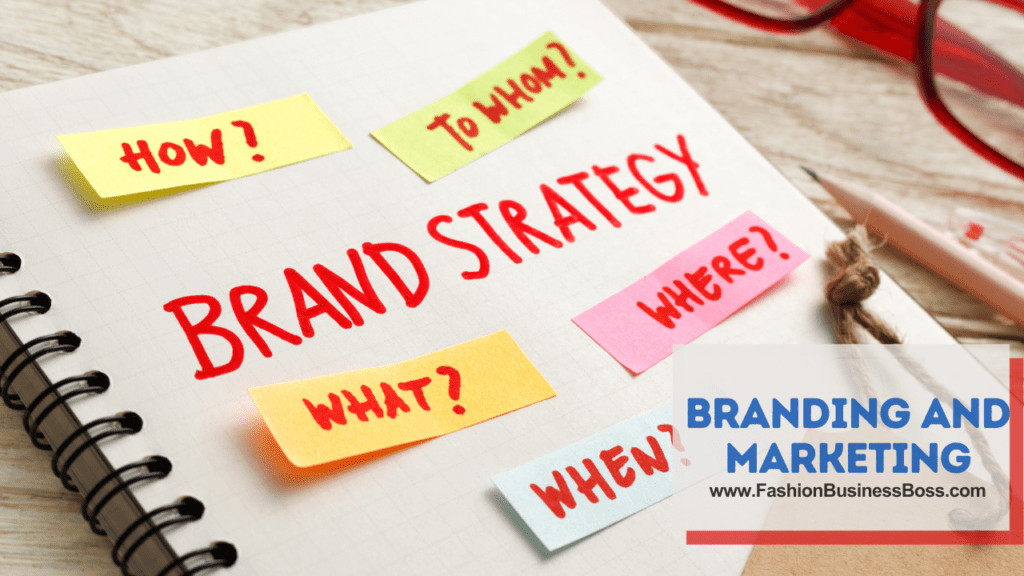Starting a clothing brand is a dream for many fashion enthusiasts and entrepreneurs. Whether you want to create your own unique fashion line or fill a gap in the market, launching a clothing brand can be a fulfilling journey.
Here are some key steps to start a clothing brand: create a business plan, handle legal aspects, design and produce your line, focus on branding and marketing, set up sales channels, manage finances, build a skilled team, and plan for growth.
In this article, we’ll walk you through the essential steps and considerations to turn your fashion vision into a thriving business.
Business Plan

A solid business plan serves as the foundation for your clothing brand. It outlines your vision, mission, and strategies. Your plan should define your target market, competition, and unique selling points. By setting clear goals and objectives, you provide a roadmap for your brand’s growth. These goals should be specific, measurable, and achievable, helping you stay focused on your desired outcomes.
Creating a detailed budget is crucial. This budget should encompass all expenses, from production and marketing to operational costs. It’s essential to allocate resources wisely to ensure financial stability.
If your budget requires more capital than you can personally invest, securing funding becomes necessary. You can explore options such as loans, investors, or crowdfunding. Each has its pros and cons, so careful consideration is needed to choose the right fit for your brand.
A clothing brand starts with a well-thought-out business plan, clear objectives, a comprehensive budget, and securing the necessary funding if your resources are limited. These foundational steps will set you on the path to realizing your clothing brand aspirations.
Read more about: Making Waves Online: Starting a Clothing Store
Legal Considerations
First and foremost, registering your business is a fundamental step. This process involves officially establishing your clothing brand as a legal entity, which can be a sole proprietorship, LLC, or corporation. It provides you with legal protection and allows you to conduct business in compliance with the law.
Trademarking your brand name and logo is vital to protect your unique identity. This ensures that no one else can use your brand’s name or logo without your permission. It’s a safeguard against potential intellectual property disputes and counterfeiting.
Moreover, compliance with industry regulations is crucial. Depending on your location and the nature of your clothing brand, there may be specific laws and regulations you must adhere to. These could include safety standards for clothing, labeling requirements, and ethical practices in the fashion industry.
To establish your clothing brand on solid legal ground, you need to register your business, trademark your brand name and logo, and ensure compliance with industry regulations. These actions provide legal protection and help maintain the integrity of your brand throughout your journey.
Design and Production
You have two primary avenues to explore when establishing your clothing line. The first involves collaborating with seasoned designers who can bring your vision to life. Alternatively, you can embark on the creative journey yourself by becoming a designer. If you choose collaboration, it’s vital to ensure that your vision aligns harmoniously with the designer’s expertise, as this partnership will greatly influence your brand’s identity.
Sourcing materials and reliable suppliers is a pivotal step in the process. You’ll need to locate trustworthy sources for fabrics, trims, and other essential materials. When selecting suppliers, factors such as cost, quality, and ethical considerations should guide your decision-making. Building robust relationships with these partners is crucial for maintaining consistent production.
Efficiently managing quality control and production is paramount. This practice guarantees that your clothing aligns with the high standards you’ve set. It involves vigilant oversight of the entire production process, from initial pattern-making to the final stitching, to ensure that your products exhibit top-notch quality and readiness for the market.
When it comes to design and production for your clothing brand, you can either collaborate with experienced designers or take on the role yourself. Meticulous sourcing of materials and suppliers, along with a dedicated focus on quality control and production management, are key factors in ensuring the consistent quality of your clothing brand’s products.
Branding and Marketing

To begin, creating a memorable logo and branding materials is pivotal. Your logo should be distinctive and instantly recognizable, reflecting the essence of your brand. Consistency in branding materials, such as packaging and labels, helps establish a strong and unified brand identity.
Building an online presence is crucial in today’s digital age. This involves setting up a user-friendly website that showcases your products and brand story. Active engagement on social media platforms allows you to connect with your target audience and build a loyal following. Regularly sharing compelling content and interacting with your audience is key to fostering a strong online presence.
Crafting an effective marketing strategy is essential for brand visibility. Consider partnerships with influencers whose audience aligns with your target market. Moreover, advertising through various channels, both online and offline, can expand your reach and attract potential customers.
When it comes to branding and marketing for your clothing brand, focus on creating a distinctive logo and branding materials, building a robust online presence through a user-friendly website and active social media engagement, and crafting a comprehensive marketing strategy, which may include influencer partnerships and advertising. These efforts will help you establish a strong presence in the market.
Read more about: Making Your Mark: Starting Your Own Clothing Line
Sales and Distribution
Firstly, you’ll need to decide on the most suitable sales channels for your brand. You can opt for online sales through your website, physical stores, or a combination of both. Each channel has its advantages and considerations, so choose what aligns best with your brand’s goals and resources.
Managing inventory and logistics is a critical part of the process. You must ensure that you have sufficient stock to meet customer demand without overstocking, which can tie up resources unnecessarily. Effective inventory management helps keep costs in check and ensures a smooth customer experience.
If you choose the wholesale route, building relationships with retailers becomes vital. This involves understanding their needs, negotiating terms, and providing support to help them sell your products effectively. Strong partnerships with retailers can significantly expand your brand’s reach and visibility.
When it comes to sales and distribution for your clothing brand, make informed choices about your sales channels, manage your inventory and logistics efficiently, and focus on building positive relationships with retailers if you opt for the wholesale route. These actions will help you get your products into the hands of customers and grow your brand’s presence in the market.
E-Commerce and Online Sales
Firstly, setting up an e-commerce platform is a pivotal step in selling your clothing line online. This involves creating a digital storefront where customers can browse, select, and purchase your products. Choose a reliable e-commerce platform that suits your needs and budget, and ensure it offers secure payment processing.
Optimizing your website for user experience and search engine optimization (SEO) is essential. A user-friendly website with clear navigation and product descriptions enhances the customer’s online shopping experience. Implementing SEO strategies helps your website rank higher on search engine results pages, making it easier for potential customers to find you.
Leveraging digital marketing is crucial to driving online sales. This involves various strategies, such as social media marketing, email marketing, and pay-per-click advertising. Tailor your digital marketing efforts to reach your target audience effectively and promote your clothing brand online.
When it comes to e-commerce and online sales for your clothing brand, focus on setting up a user-friendly e-commerce platform, optimizing your website for both user experience and SEO, and harnessing digital marketing techniques to drive online sales. These actions will help you effectively reach and engage with your online customers.
Financial Management

Firstly, tracking expenses and revenue is crucial. This involves keeping a close eye on the money coming in and going out of your business. By recording all your expenses and revenue, you gain a clear understanding of your financial health.
Managing cash flow is equally important. Cash flow refers to the movement of money in and out of your business on a day-to-day basis. To ensure smooth operations, it’s essential to monitor your cash flow regularly. This includes handling bills, invoices, and payments to suppliers and ensuring you have enough cash on hand to cover your expenses.
Planning for growth and expansion is a forward-looking financial strategy. It involves setting aside funds for potential opportunities or challenges that may arise in the future. This proactive approach helps your clothing brand adapt and thrive as it evolves.
When it comes to financial management for your clothing brand, focus on diligently tracking your expenses and revenue, managing your cash flow effectively to keep your business running smoothly, and planning for growth and expansion to ensure long-term financial stability. These financial practices will help you make informed decisions and steer your brand towards a prosperous future.
Read more about: Mapping Out Growth: How to Craft a Clothing Line Business Plan?
Building a Strong Team
Firstly, hiring skilled professionals, if needed, is essential. Assess your brand’s needs and identify areas where expertise is required. This may include designers, marketing specialists, or production managers. Ensure that the individuals you bring on board align with your brand’s vision and values.
Fostering a positive work culture is the foundation of a harmonious team. Cultivate an environment where open communication, collaboration, and respect are encouraged. A positive work culture not only boosts team morale but also enhances productivity and creativity.
Delegating tasks effectively is crucial for efficiency. Recognize the strengths and skills of each team member and assign tasks accordingly. Delegation allows you to focus on strategic decisions while team members handle day-to-day responsibilities.
When it comes to building a strong team for your clothing brand, consider hiring skilled professionals if your brand requires specific expertise, create a positive work culture that encourages teamwork, communication, and respect, and delegate tasks effectively to maximize efficiency. These actions will contribute to a cohesive and productive team, supporting the growth and development of your clothing brand.
Scaling and Growth
Firstly, expanding your product line is a strategic move. Consider introducing new clothing items, styles, or collections that resonate with your target audience. Expanding your offerings can attract a broader customer base and increase sales.
Entering new markets is another avenue for growth. Explore opportunities to sell your clothing brand in different regions or through various distribution channels. This can involve online sales to reach a global audience or collaborating with retailers in new geographic areas.
Remaining adaptable and innovative is key to sustainable growth. The business landscape is ever-evolving, so it’s important to stay flexible and open to change. Embrace new technologies, trends, and customer preferences to stay competitive and relevant.
When it comes to scaling and achieving growth for your clothing brand, consider expanding your product line to attract a wider customer base, explore new markets for increased reach, and maintain adaptability and innovation to thrive in a dynamic business environment. These strategies will help your brand continue to evolve and expand.
Conclusion
Starting a clothing brand is a journey that requires dedication, creativity, and a strong business mindset. By following these steps and staying committed to your vision, you can turn your passion for fashion into a great and thriving clothing brand. Remember that the fashion industry is ever-evolving, so stay informed, stay inspired, and keep pushing the boundaries of your creativity.
Frequently Asked Questions

Q: What are the initial steps in starting a clothing brand?
A: To initiate a clothing brand, one should begin by defining the target audience, conducting market research, and creating a clear business plan.
Q: What legal considerations are important when launching a clothing brand?
A: Legal considerations include registering the business, trademarking brand elements, and ensuring compliance with industry regulations.
Q: How can I effectively market a clothing brand?
A: Effective marketing strategies involve building an online presence, crafting a compelling brand story, and using various promotional methods such as influencer partnerships and advertising.
Q: What financial aspects should be managed when running a clothing brand?
A: Financial management includes tracking expenses, monitoring revenue, managing cash flow, and planning for future growth and expansion.
Q: How can sustainability be incorporated into a clothing brand?
A: Sustainability can be achieved by considering eco-friendly materials, ensuring fair labor practices, and communicating the brand’s commitment to environmental and ethical values.
To learn more about starting your own clothing business, check out my startup documents here.
Please note that the contents of this blog are for informational and entertainment purposes only and should not be construed as legal advice. Any action taken based on the information provided in this blog is solely at your own risk. Additionally, all images used in this blog are generated under the CC0 license of Creative Commons, which means they are free to use for any purpose without attribution.

Meet Shawn Chun: Entrepreneur and Fashion Business Fan.
I’m a happy individual who happens to be an entrepreneur. I have owned several types of businesses in my life from a coffee shop to an import and export business to an online review business plus a few more and now I create online resources for those interested in starting new ventures. It’s demanding work but I love it. I do it for those passionate about their business and their goals. That’s why when I meet a designer or boutique owner at a craft fair, farmers market, retail location or anywhere else I see myself. I know how hard the struggle is to retain clients, find good employees and keep the business growing all while trying to stay competitive.
That’s why I created Fashion Business Boss: I want to help fashion business owners like you build a thriving business that brings you endless joy and supports your ideal lifestyle.

